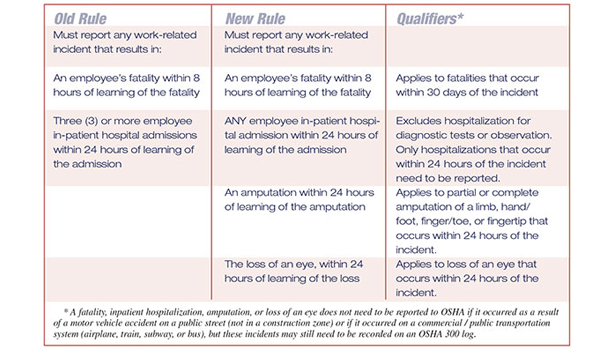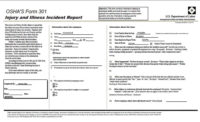Interpreting OSHA recordkeeping requirements

In order to determine if an injury or illness needs to be recorded, several questions need to be answered.
First, is it work-related?
Assess the employee’s job tasks and their work environment. Why? Injuries that occur when commuting to and from an employee’s standard work location are not recordable, for example. But if an employee is injured while traveling between two different work locations, it may be recordable.
Another example relating to work environment: Once an employee checks into a hotel on work travel, that temporary residence is viewed similarly as “home” with regard to recording injuries or illnesses. When at the hotel, the employee has left the work environment. In fact, if the individual is reporting to a fixed work-site, injuries that occur while commuting between the hotel and the work-site are not recordable.
Working at home
If an employee works from home, an injury/illness that occurs while the employee is performing work and is directly related to the performance of the work, not the general home environment, may be recordable. An employee who trips over the family dog while rushing to answer a work call and sustains an injury does not meet the work-related criteria. If the employee drops a box of work papers on their foot while working, that would be considered work-related.
Recordkeeping exceptions
Even if an injury/illness occurs in the work environment, there are several exceptions that could deem the injury/illness not to be work-related — such as an event that occurs when an employee is participating in a voluntary wellness, medical or fitness program, or an event that occurs as a result of eating, drinking or preparing food at work for personal consumption.
You also need to determine whether a work-related incident caused, or contributed to the injury or illness, or significantly aggravated a pre-existing condition. To determine this, it may be helpful to ask if the injury/illness would have occurred or been aggravated except for the workplace incident.
Events may occur in the work environment while someone is carrying out their job responsibilities that are not work-related. For example, an employee with a seizure disorder that suffers a seizure and lost consciousness. Or an employee suffers a heart attack at his desk. Without a precipitating incident or exposure, these would not need to be recorded.
OSHA’s criteria
Assuming the injury or illness is work-related, examine whether it meets recording criteria. A work-related injury or illness is recordable if:
• It results in days away from work, restricted work, or transfer to another job.
• It requires medical treatment beyond first aid.
• It involves a loss of consciousness; is diagnosed as a significant illness or injury by a healthcare professional; or it results in death.
First aid in and of itself does not meet the standard for recordability. First aid includes cleaning and bandaging a wound; use of steri-strips to close a wound; providing tetanus vaccination; use of hot or cold therapy; use of ace bandages or any non-rigid means of support; use of non-prescriptive medicines in a non-prescriptive dose; performing an eye irrigation; removal of a foreign body in the eye or a splinter from another area of the body using irrigation, tweezers, or a cotton swab; use of an eye patch; drilling of a fingernail or toenail to relieve pressure; draining fluid from a blister; using finger guards; using a temporary immobilization device during transport (such as a splint or back board); use of massage (physical therapy or chiropractic treatment are considered medical treatment); or drinking fluids for relief of heat stress.
Since medical treatment and restricted or lost work days automatically trigger a recordable incident, your treating healthcare provider should understand the types of care that constitute first aid, have access to the employee’s job description, and understand whether your organization can accommodate restricted duty. If the employee does not return to work after seeing the treating provider, it may not be considered lost time. Restricted or lost work days start the day after the injury or illness began.
For example, an employee sees the treating physician on Friday for a work-related injury and the provider states he can return to work on Monday. Even if the employee is not scheduled to work over the weekend, two lost work days have occurred according to the recordkeeping rules and the incident is now recordable. If the treating provider indicated the employee could return to work the next day, it would not trigger a recordable status, even though the employee was off and not scheduled to work over the weekend.
For complicated incidents, OSHA offers written interpretive guidelines on its website, or you can confer with a knowledgeable healthcare provider for guidance. Either way, document the thought process that guided your decision.
Information in this article was compiled from OSHA’s resource on the new reporting rule which can be found on the OSHA website.
Looking for a reprint of this article?
From high-res PDFs to custom plaques, order your copy today!





